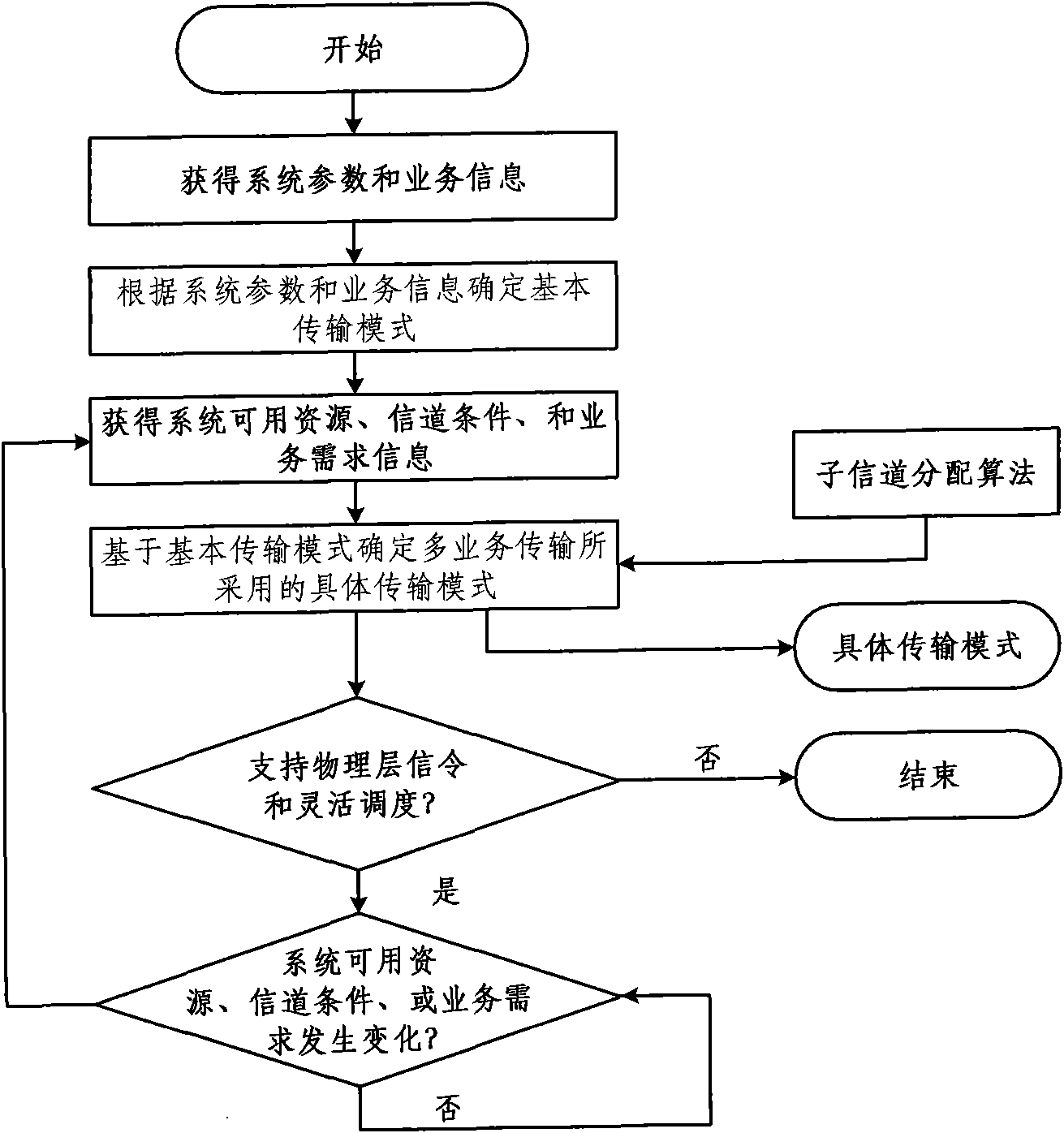Method for determining downlink multi-access system transmission mode, transmitting end device and receiving end device
A transmission mode and receiving end technology, applied in the field of digital information transmission, can solve problems such as inability to support radio frequency channels, physical layer frame structure cannot well support various business needs, and difficult spectrum resources
- Summary
- Abstract
- Description
- Claims
- Application Information
AI Technical Summary
Problems solved by technology
Method used
Image
Examples
Embodiment 1
[0174] This embodiment provides a flow of a method for determining a multi-service transmission mode of a downlink multiple access system based on a multiframe structure and time-frequency sub-channels.
[0175] The method of determining the multi-service transmission mode of the downlink multiple access system needs to consider the application environment of the downlink multiple access system and corresponding system parameters; it needs to consider the service requirements of different target users and correspond to service information; at the same time, under the premise of meeting the service needs of the target users, The best compromise is achieved between multiple objectives such as system transmission efficiency and system implementation complexity.
[0176] like figure 2 As shown, based on the background technology and the above-mentioned definition of the multiframe structure and the description of the downlink multiple access OFDM block transmission system, the pr...
Embodiment 2
[0233] The flow of the method for determining the multi-service transmission mode of the downlink multiple access system in this embodiment is based on Embodiment 1. This embodiment specifically provides the multi-frame structure adopted in the multi-service transmission mode in the method described in Embodiment 1.
[0234] The multiframe structure is the starting point of the transmission mode determination, work flow and implementation device of the present invention. Refer to attached Figure 7 , the multiframe structure proposed by the present invention for the downlink multiple access OFDM block transmission system has the following characteristics:
[0235] 1) The multiframe consists of an auxiliary signal and one or more time domain data frames;
[0236] 2) The auxiliary signal is one of the following forms: a preamble sequence, a superposition sequence, a known training sequence between or after time-domain data frames, or a combination of multiple sequences, or ther...
Embodiment 3
[0246] This embodiment provides a transmitter device based on the method for determining a downlink multiple access multiple service transmission mode proposed by the present invention.
[0247] Refer to attached Figure 9 , based on the background technology and the above description about the multiframe structure definition and the downlink multiple access OFDM block transmission system, the present invention proposes a transmitting end device based on the above method for determining the downlink multiple access multi-service transmission mode, including: a resource scheduling unit, a signal It is composed of a service multiplexing unit, a sub-channel coding and modulation unit, a frequency domain data block composition unit, an IDFT unit, a time domain data frame framing unit, a multiframe framing unit and a multiframe subsequent processing unit, which are used to convert signaling service data into and other common service data are converted into OFDM transmission signals...
PUM
 Login to View More
Login to View More Abstract
Description
Claims
Application Information
 Login to View More
Login to View More - R&D
- Intellectual Property
- Life Sciences
- Materials
- Tech Scout
- Unparalleled Data Quality
- Higher Quality Content
- 60% Fewer Hallucinations
Browse by: Latest US Patents, China's latest patents, Technical Efficacy Thesaurus, Application Domain, Technology Topic, Popular Technical Reports.
© 2025 PatSnap. All rights reserved.Legal|Privacy policy|Modern Slavery Act Transparency Statement|Sitemap|About US| Contact US: help@patsnap.com



